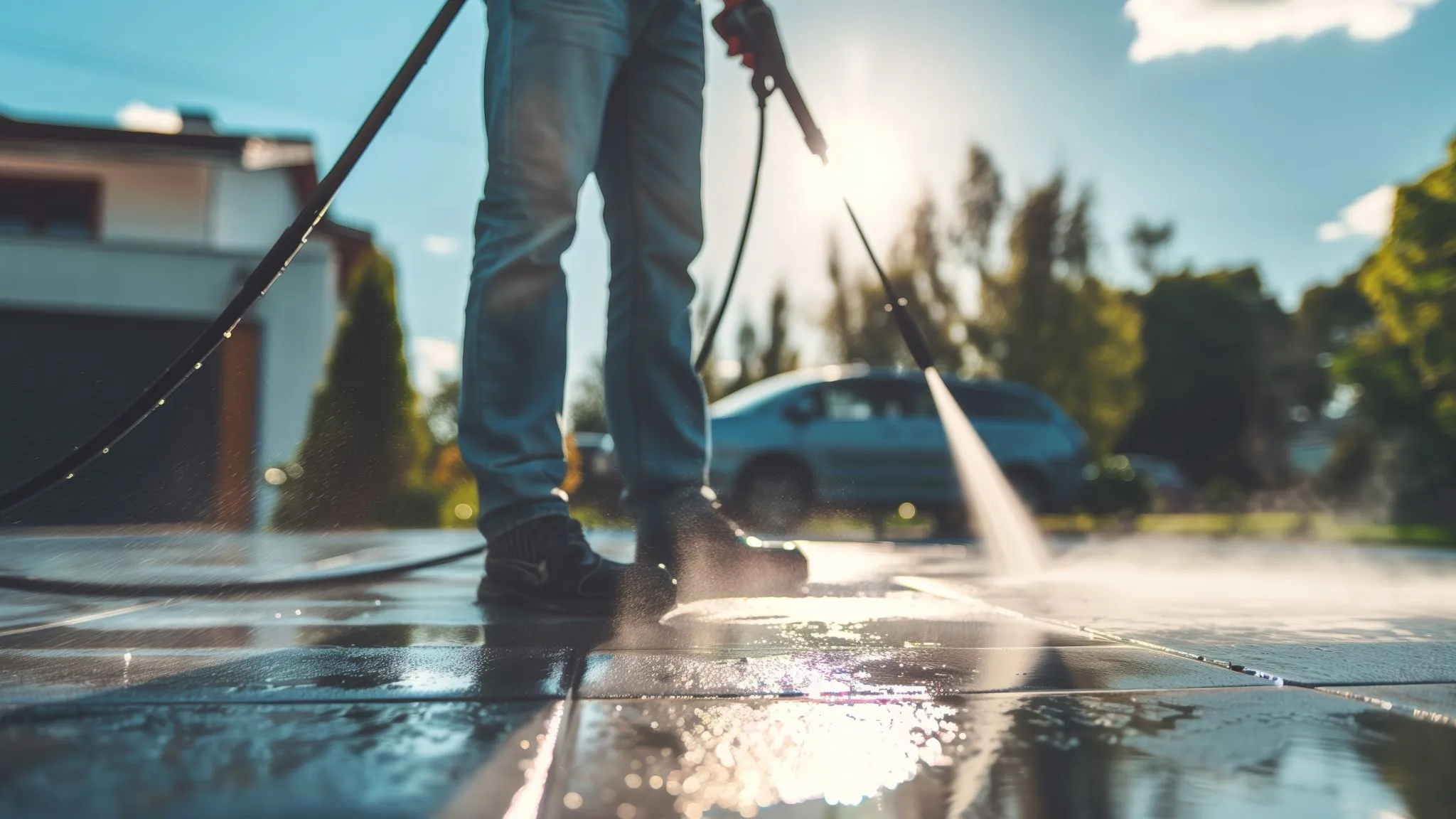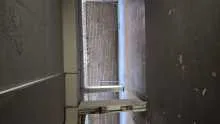Driveway Maintenance: How To Prevent Cracks And Wear
Is your driveway showing signs of wear and tear? Are cracks, potholes, or fading colours starting to detract from your home's kerb appeal? Just like the well-maintained parking spaces and car parks we expect when visiting shopping centres, your driveway deserves the same level of care. After all, your driveway is essentially your personal parking spot—the first thing visitors see when arriving at your home and the last thing you see before heading out each day. According to a 2024 report by the Property Council of Australia, well-maintained driveways can increase property values by up to 5-7%, making driveway maintenance not just about aesthetics but a smart financial decision too. As someone who's helped countless Australians find and maintain parking solutions, I've seen firsthand how proper maintenance prevents costly repairs down the road. This guide will walk you through essential maintenance strategies to keep your driveway looking great for years to come, whether you have a concrete, asphalt, or paved surface. Find effective driveway protection ideas in this comprehensive guide.
1. Regular Cleaning
Keeping your driveway clean is one of the simplest yet most effective ways to prevent early wear and tear. Over time, dirt, leaves, and debris can accumulate on the surface, creating friction and wearing down the material, especially when vehicles are driven over it. Think of your driveway as an extension of your home parking garage or private parking lot—regular cleaning maintains both appearance and structural integrity. From my experience working with property developers across Sydney and Melbourne, driveways that receive quarterly deep cleaning last up to 40% longer than neglected ones. Debris can trap moisture against the driveway surface, leading to mildew and mold growth which weakens asphalt and concrete over time. I recommend establishing a cleaning routine that includes:
- Weekly sweeping to remove loose debris and prevent staining
- Monthly hosing down to eliminate built-up dirt and grime
- Quarterly degreasing to remove oil and chemical spills
- Seasonal pressure washing (at least once per year) to remove deeper grime and restore appearance
Pressure washing is particularly effective, but ensure you use the appropriate pressure setting for your driveway material to avoid causing damage. Discover the best seasonal timing for driveway cleaning to maximise effectiveness and protect your investment.

2. Seal the Driveway
Applying a sealant is critical in protecting your driveway from the elements, much like how commercial parking stations and large car parks require regular maintenance to withstand constant traffic. Sealing should be done every 2 to 3 years for asphalt driveways, while concrete surfaces may go 3 to 5 years between applications, depending on weather exposure and usage. According to the Australian Asphalt Pavement Association, properly sealed driveways can last up to twice as long as unsealed ones in our harsh climate. The sealant provides a crucial barrier against harmful substances such as water, oil, and UV rays, which are particularly intense in Australia. From my work consulting with property managers in Brisbane and Perth, I've observed that sealing before the rainy season provides optimal protection. The process involves thoroughly cleaning the surface, repairing any cracks or damage, applying the sealant according to manufacturer instructions, and allowing adequate drying time. "One of the primary reasons for sealing your concrete driveway is to provide a barrier against the harsh Australian weather it faces throughout the year. This barrier prevents water from seeping into the concrete, thus averting potential damage caused by freeze-thaw cycles," states the Australian Slate-Crete Supplies in their blog.
3. Fill Small Cracks Immediately
Small cracks may seem harmless initially, but they are the beginning of more significant issues if left unchecked. Water can penetrate these cracks, and freezing temperatures can cause the water to expand, widening the cracks and potentially leading to more extensive damage. As Daniel Battaglia notes in Parking Made Easy: Making Life Easier, "The very worst thing for any property owner is planning maintenance and then getting to it too late to find out the damage is much worse than expected." This sentiment applies perfectly to driveway maintenance, where timing is everything. Australian weather conditions, with alternating intense heat and sudden downpours, make our driveways particularly vulnerable to crack formation. I recommend inspecting your driveway thoroughly at least twice a year—ideally at the beginning of spring and autumn—and addressing any cracks immediately. For asphalt driveways, use a quality asphalt crack filler, while concrete requires a specialized concrete filler. Learn proper techniques for repairing and resealing your driveway to ensure lasting protection against the elements.

4. Prevent Water Damage
Water is one of the most damaging elements for driveways, particularly in coastal Australian regions where salt-laden moisture accelerates deterioration. Just as parking garages need proper drainage systems to protect vehicles and infrastructure, your driveway requires adequate water management to maintain structural integrity. Research from the CSIRO shows that water-related damage accounts for approximately 70% of premature driveway failures in Australia. Proper drainage is essential to avoid standing water, which can seep into the surface and cause cracks. In my consultations with homeowners across Adelaide and Hobart, I've found that properties with well-designed drainage systems experience significantly fewer driveway issues. Consider implementing these water management strategies:
- Ensure your driveway has a slight slope (ideally 1-2%) away from your home
- Install channel drains at the bottom of sloped driveways
- Check that downspouts direct water away from the driveway surface
- Consider permeable paving options for new installations to allow water absorption
- Grade the surrounding landscape to promote water runoff
Proper maintenance of your driveway protects not only your personal parking area but can also add significant value to your property.
5. Avoid Heavy Loads
Driveways are designed to support a certain amount of weight, but continuous exposure to heavy loads can cause stress cracks, especially on asphalt surfaces. According to a 2023 study by the University of Queensland's civil engineering department, residential driveways typically have a designed load capacity 30-40% lower than commercial parking lots and public parking spaces. Avoid parking large trucks, trailers, or construction equipment on your driveway for extended periods. The weight of these vehicles can compress the material, leading to indentations, which can eventually crack. This is particularly important during the Australian summer months, when high temperatures can make asphalt surfaces more pliable and susceptible to compression damage. If you must temporarily park heavy equipment, consider using weight distribution plates to spread the load more evenly across the surface. For homeowners with trailers or caravans, rotating their position regularly can prevent sustained pressure in one spot. Find alternative parking solutions for oversized vehicles in your area to help extend the life of your residential driveway.

6. Additional Maintenance Considerations
Beyond the fundamental maintenance practices, several additional factors can significantly impact your driveway's longevity. Edge protection is crucial, as the perimeter of your driveway is most vulnerable to cracking and breaking. Consider installing edging materials like brick pavers or concrete curbing to reinforce these areas. Root problems from nearby trees can cause significant damage through underground growth that pushes upward on your driveway surface. According to the Australian Driveway and Parking Designers Association, approximately 25% of driveway damage in suburban areas is attributed to tree root interference. When planting near driveways, choose species with non-invasive root systems and consider installing root barriers between trees and paved surfaces. Regular resealing and resurfacing are also essential components of preventative maintenance. When significant wear is visible but the underlying structure remains sound, resurfacing provides a cost-effective alternative to complete replacement. As concrete industry experts suggest, timely resurfacing can extend your driveway's useful life by 7-10 years at roughly one-third the cost of replacement.
Conclusion
A well-maintained driveway enhances your home's curb appeal and provides a safe, reliable parking spot for your vehicles for years to come. By implementing the maintenance strategies outlined in this guide—regular cleaning, timely sealing, prompt crack repair, proper water management, weight distribution awareness, and attention to edges and vegetation—you can significantly extend your driveway's lifespan and avoid costly replacements. Remember that preventative maintenance is always more cost-effective than reactive repairs. Australian homeowners face unique challenges from our climate, from intense UV exposure to dramatic temperature fluctuations, making consistent maintenance even more critical. Has this guide helped you identify areas where your driveway needs attention? We'd love to hear about your driveway maintenance experiences or answer any questions you might have. Download our free maintenance schedule template to help you keep track of essential driveway care throughout the year. Sign up free for more property maintenance tips and exclusive guides from our team of experts.
**About the Author:** Daniel Battaglia is the Founder and Chief Executive Officer at ParkingMadeEasy.com.au. Daniel has been working in the parking and urban mobility sector since 2012. With a passion for simplifying parking and helping people save money and time, Daniel provides expert insights into the benefits of finding, booking and renting car parking spaces with the help of Generative AI. For enquiries, you can reach Daniel directly at daniel@parkingmadeeasy.com.au.






